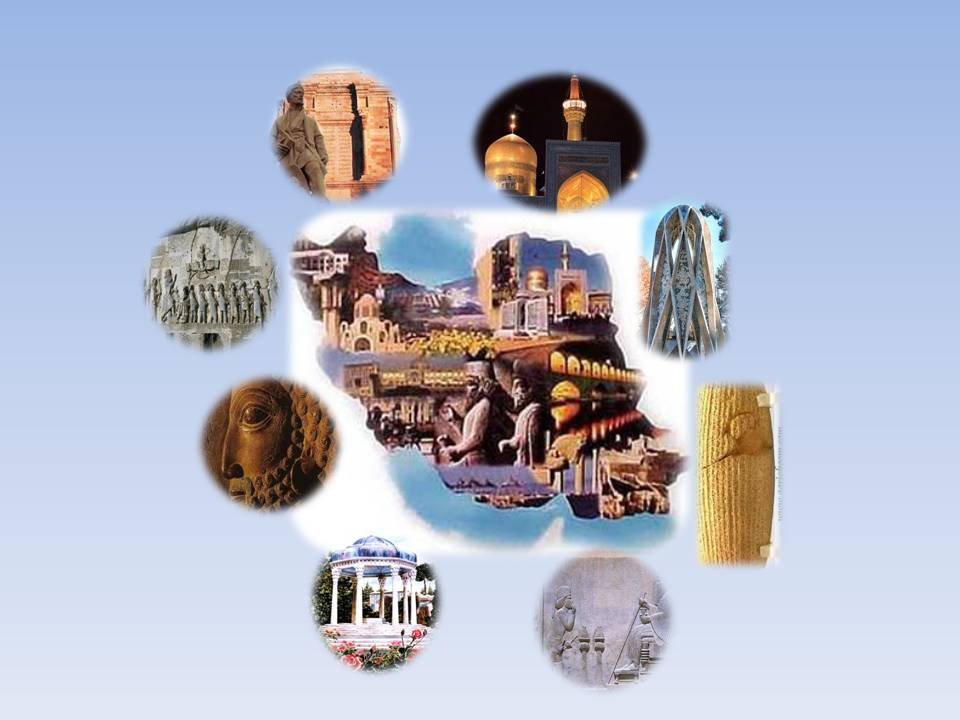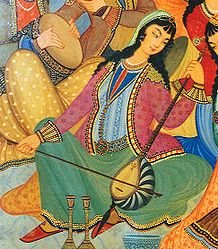- Religion
About Iranian religion:
Muslims constitute the majority in the Islamic Republic of Iran while Zoroastrians, Christians, Jews and Bahá'ís make up the non-Muslim minority of the nation. Iran is a predominantly Shi'ite country where Sunnis and Sufis are minority Muslim communities. The Shi'ite branch of Islam has been further divided into several sub-sects and the majority of Iranian Muslims are followers of the Twelve Imams. Islam pervades public life in Iran is evident from an Islamic dress code for women, the existence of numerous mosques across the country and prayer rooms in public places to trains halting to offer namaz (prayers), all these glimpses of the Islamic way of life are visible across the country. The Sassanian Kings who once ruled over Iran recognized Zoroastrianism as the official religion of the country. All this changed after the Arabs invaded Iran and many of the Zoroastrians were converted to Islam. The majority of those who did not convert migrated to India while others chose to stay behind and practise their faith. Muslims today dominate the religious make up of the country and are divided in to three main sects; Shias, Sunnis and Sufis.
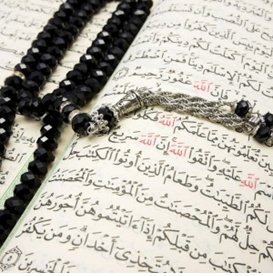
About Iranian prayers:
The post-revolution government in Iran restricted freedom of religion. The Constitution declared that the "official religion of Iran is Islam". "The Army of the Islamic Republic of Iran must be an Islamic army" However, members of religious minority communities sometimes served in the military. It also stated that "other Islamic denominations are to be accorded full respect," and recognizes Zoroastrians, Christians, and Jews, the country's pre-Islamic religions, as the only "protected religious minorities." The primacy of Islam affects all sectors of society. For example, non-Muslim owners of grocery shops were required to indicate their religious affiliation on the fronts of their shops. Individuals of all religions are required to observe Islamic codes on dress and gender segregation in public. Individuals of minority religions are prohibited from serving in senior administrative positions in many government ministries. The government generally allowed recognized religious minorities to conduct religious education of their adherents, although it restricted this right considerably in some cases. Members of religious minorities were allowed to vote, but they could not run for President.
Muslims observe five formal prayers each day. The timings of these prayers are spaced fairly evenly throughout the day, so that one is constantly reminded of God and given opportunities to seek his guidance and forgiveness. Muslims observe the formal prayers at the following times:
Fajr (pre-dawn): This prayer starts off the day with the remembrance of God; it is performed before sunrise.
Zohr (noon): After the day's work has begun, one breaks shortly after noon to again remember God and seek His guidance.
Asr (afternoon): In the late afternoon, people are usually busy wrapping up the day's work, getting kids home from school, etc. It is an important time to take a few minutes to remember God and the greater meaning of our lives.
Maghrib (sunset): Just after the sun goes down, Muslims remember God again as the day begins to come to a close.
Isha (evening): Before retiring for the night, Muslims again take time to remember God's presence, guidance, mercy, and forgiveness.
In Muslim communities, people are reminded of the daily prayer times through the calling of the Azan For those in Muslim-minority.
In ancient times, one merely looked at the sun to determine the various times of day for prayer. In more modern times, daily prayer schedules are often printed which precisely pinpoint the beginning of each prayer time.
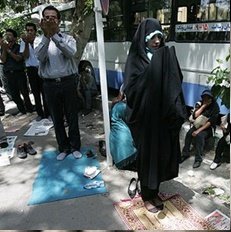
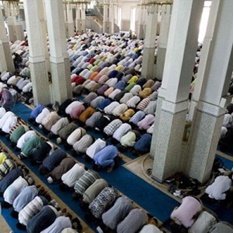
About Iranian islamic illegal substances:
A variety of substances are considered as illegal (haraam) for humans to consume and, therefore, forbidden as per various Quranic verses:
· Pork
· Animals slaughtered in the name of anyone but "Allah". Any thing that has been dedicated or offered in sacrifice to an idolatrous altar or saint or a person considered to be "divine".
· Carrion (carcasses of animals which were not killed by a human or pets trained any purpose, such as dogs or falcons.
· An animal that has been strangled, beaten (to death), killed by a fall, gored(to death), or savaged by a beast of prey (unless finished off by a human).
· Blood
· Intoxicants and alcoholic beverages.
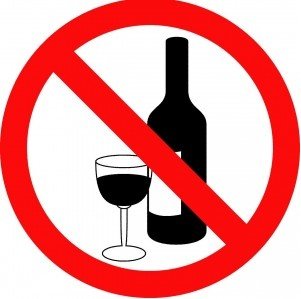
- Greetings
About Iranian greetings:
1. The most common Iranian greeting is "Salaam" which means peace.
2. When greeting at social events, men kiss other men and women kiss other women. If Iranian meet on the street a handshake is a common greeting.
3. Shaking hands with a child shows respect towards their parents.
4. When greeting people, older people should always be greeted first.
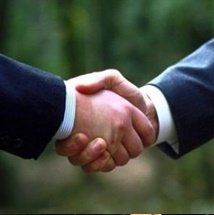
- Dress
About Islamic Clothing:
A Hijab is a veil that covers the head and chest, which is sometimes worn by some Muslim women beyond the age of puberty in the presence of adult males outside of their immediate family as a form of modest attire. According to some interpretations, it may also be worn in the presence of adult non-Muslim females outside of their immediate family. The Hijab can further denote any head, face or body covering worn by Muslim women that similarly conforms to a certain standard of modesty. It can also be used to refer to the seclusion of women from men in the public sphere, or it may embody a metaphysical dimension – Al-Hijab refers to "the veil which separates man or the world from God". In fact the word "veil" derives from a Latin word which means much the same as Hijab. Most often, the Hijab is worn by Muslim women as a symbol of modesty and privacy. The Quran admonishes Muslim women to dress modestly and to wear loose clothing over their breasts and hips. Most Islamic legal systems define this type of modest dressing as covering everything except the face and hands in public. The Quran mandates Hijab for both men and women, the word "Hijab" does not mean headscarf, but cover. The Quran states "tell the believing men to lower their gaze (in the presence of women), this is better for them.
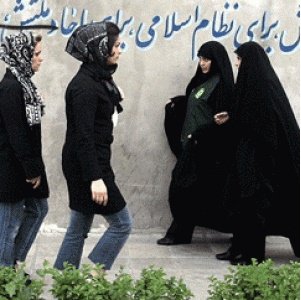
About Iranian dress code:
When travelling to Iran, one must know that this is a country with an Islamic dress code called “Hijab” and respectable Islamic rules which have to be obeyed to some extent by the Muslim Iranians but are not imposed strictly, especially on tourists and foreigners.
These simple rules for men include not wearing short trousers, very tight shirts and T-shirts which are short-sleeved. Men do not wear ties or bow ties for everyday occasions, but they dress in a very Western style for private functions and events.
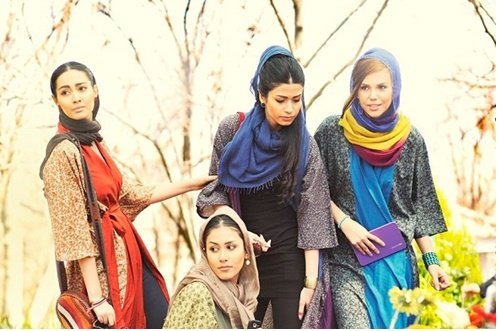
About Iranian way of dressing:
Most visitors to Iran find it quite surprising that Iranian men and women wear stylish clothes in beautiful colours and have a great sense of fashion which is totally different from the stereotype of people in Iran.
Iranian women cover their heads by loose fitting scarves and frame their faces with locks of hair. Many of them wear light makeup. Different types of jeans are very popular among Iranian girls. They wear long coats called manteau, which may be of any colour, to cover the body below the thigh. Chador is an option for Iranian women who prefer to have full Islamic cover, but wearing it is not mandatory.
Tips for tourists in Iran:
Ladies:
1. You have to wear your Hijab while outdoors. If you fail to do so, the maximum penalty for not observing the dress code in Iran would be a simple request (usually in a friendly way) by the police or authorities to observe the dress code.
2. You can wear any colour.
3. You must choose long trousers, jeans or skirts that completely cover your legs. They must not be skimpy.
4. You have to wear scarves (they are called “Roosari” in Persian), or any type of hat or cap that covers your hair.
5. You have to wear a chador in almost all holy shrines, and you are given one at the entrance.
6. On international flights to Iran, you need to respect the dress code as soon as the plane enters Iranian air space. Watching the flight attendants will give you a good idea of when you are required to put your scarf and manteau on.
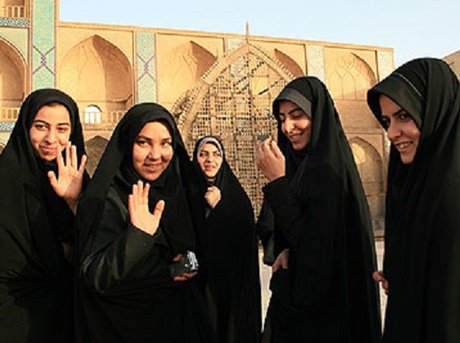
Gentlemen:
1. You need to wear long pants or jeans. Shorts are not acceptable in public.
2. Wearing ties, bows and T-shirts is all right. Keep in mind that in formal occasions and while dealing with embassies, universities, schools and any other governmental institutions, agencies and organizations obeying the dress code is highly recommended.
- Calendars and Events
About the Iranian calendar:
There are three types of calendar:
1- Solar calendar
2- Lunar calendar
3- Gregorian calendar
As usual Solar calendar is used in Iran and all the events and celebrations are according to this type. Nowruz eve is the first day of the year in othis calendar.
The events related to religious matters are held according to the Lunar calendar. The interesting point about these two types is their nonconformance since Lunar year is 10 days shorter than the Solar one while duration of Solar and Gregorian calendars are the same. Another point is that after every 4 years in Solar calendar there is an intercalary year which has a day more than 3 previous years
In Iran, Muslims observe the holy month of Ramadan. During Ramadan, in addition to taking special care to avoid certain sins mentioned in the Qur'an, Muslims must abstain from food or drink of any kind during daylight hours, a long stretch in the middle of the summer. The first call to prayer arrives shortly after 4am and the final call just after 8pm. The rules must be abided by throughout, and the summer doesn't make the job any easier. In this month people are not allow to eat or drink anything in public.
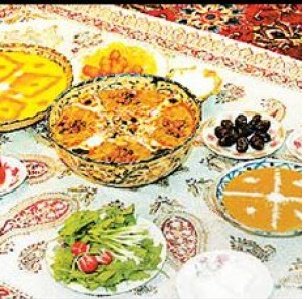
Moharam is the first month of the Islamic calendar. The Shiite Muslims commemorate the Battle of Karbala and consider this as a month of sadness and mourning. Ashurah is the day Hosseinn ebn Ali, the grandson of the prophet Mohammad was martyred along with his family members and friends in the Battle of Karbala. This month is period of intense grief and mourning. Clerics give sermons with themes of Hossein’s personality and position in Islam, and the history of his uprising. They retell the Battle of Karbala and speak about the pain and sorrow endured by Hossein and his family. Many people congregate together in the mosques for chest beating and mourning .They show their devotion to Imam Hossein by Lamenting and grieving to the tune of beating drums, sound of bugles and chants of “Ya Hossein.” Some people sacrifice a sheep or cow in Ashura.

- Weddings
About Iranian Weddings:
Iranian wedding are meant to be very public celebrations taking place in front of as many people as possible.
An Iranian wedding ceremony has different parts:
Mehrieh: the Gift
The groom must give the bride a gift or a Mehrieh which symbolises financial protection. The Mehrieh is given during the first part of the wedding ceremony called "Aghd or knot"
Sofreh Aghd: the wedding spread
This part of the ceremony takes place in a room with the Sofreh Aghd, a special fabric that is set out on the floor facing east in the direction of sun. The couple sits at the head of spread which often includes the following items:
Gold Coins a symbol of wealth and success.
Eggs or Nuts which represent fertility.
Two candelabras and a mirror representing fire and light.
Incense to ward off the evil eye.
Noon-e-sangak a flatbread with the blessing "mobarak baad".
Aroosi: the party
The Aroosi receptions follow the Aghd. Although the groom's family has traditionally paid for the wedding party,
modern couples often share the cost.

- Music
About Iranian Music:
Music has been an ancient traditional art in Iran at various parts of this country. To have a better understanding of its history, let’s review how it’s been evolved in Iran.
Music has been a traditional artform throughout Iran since ancient times. To have a better understanding of its history, let’s review how it has evolved.
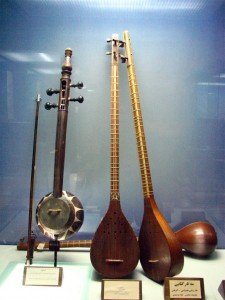
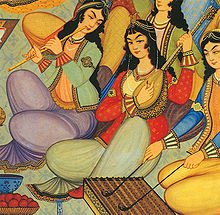
Origins:
Archeological evidence reveals musical instruments that were used in Iran during the Elamite era around 800BCE. Not much is known about Persian music in the ancient world, especially about the music of the Achaemenid Empire. Alexander the Great is said to have witnessed many melodies and instruments upon his invasion, and music played an important role in religious affairs, as well as in the courts of Sassanid kings in the much later Sassanid Empire. Of this period, we know the names of various court musicians such as Barbad and the types of instruments that were used, for example, harps, lutes, flutes, bagpipes. Under Sassanid rule, modal music called the khosravani was developed by the highly significant court musician, Barbad. While today's classical music tradition in Iran bears the same names of some of the modes of that era it is impossible to know if they sound the same because there is no evidence of musical notation from the Sassanid period. Today's traditional Persian music began to develop after the advent of Islam in Iran, in the Medieval era and the creation of today's formal, classical music tradition is directly linked to the music systems of the Safavid Dynasty. Under the later Qajar Dynasty, the classical system was restructured into its present form.

Music during Pre-Islam Iran:
During antiquity, music was a means of communication. It later became part of people’s beliefs and rites and was played in funerals and happy occasions.
According to an ancient seal found in Choghamish, dated to 3400 B.C, the most ancient music orchestra of the world in Khoozestan province in the south west of Iran. In 8th century B.C, Elamites music was under Assyrians’ influence. Even during Achaemenians, that influence was still present. Under Seleucids and Parthians, Hellenistic art had made an impact on Iranian music. But it was during Sassanians that Iranian music developed an independent innovative identity.
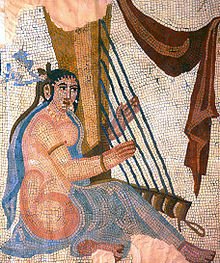
Achaemenians:
During Achaemenians, there were three kinds of music in Iran: religious, military and local. The religious music was a special kind of song called Gatheha sung by priests and was merely vocal, not instrumental. It differentiated Iranian music from others of its time, for example that of the Assyrians, Babylonians or Semites. The influence of this kind of music is still present in various music in different parts of Iran.
Sassanians:
Music became one of the essential parts of schooling and training in Sassanian court. It is said that some 12000 Indian entertainers were invited to migrate from India to Iran to bring joy and pleasure by music to different corners of the empire. During Anushirvan period, music was brought to a higher status and Iranian music entered Arabian world and was imitated there to become the foundation of their art.
Barbad, Ramtin, Sarkis, Bamshad, Nakisa and Azadvar-e-Changi were the outstanding figures among the musicians of the Sassanian era who composed unforgettable pieces and founded the basis of some schools of music still being played in Iran. Also, the influence of Manichaeism and Mazdakism in the music of that era cannot be denied. Minstrelsy was also an ancient Iranian tradition that was popular with all classes of people.
From ancient Iran to the end of Sassanian era, in a 1200-year span, there is not much information about the musical instruments made and played. Only a few ancient instruments are known about, belonging to pre-Achaemenian period, and these are unique and the first instances of their kinds in the world.
Music during Post-Islam Iran:
In early post-Islam period, when Caliphs interpreted Iranian music to be against the principles of Islam, Iranian artists preserved music in any way they could and changed its theme from happy to sad one to match the nations’ mood. The Arabian armies were inclined toward martial music. Like Iranians, they had mixed poetry with music. The musical instruments they seemed to have had were drums and horns. They learned a lot from Iranian music. Today, among 52 various tones of Arabic music of Egypt, Syria and Lebanon there are 30 Iranian organizations, which influenced their music.
The first two Caliphs were no patrons of music and even forbade it. They went further and ordered severe sentences such as mutilatinon, for all people involved in this art. During the reign of the third Caliph, luxurious life began in his court and music became part of his life. When the fourth Caliph, Ali, took power the status of music was improved by his support. Yet Muslims regarded music as something equal to alcoholism, gambling and sensuality.
As a result of Umayyad and Abbasid Caliphs’ increased contact with the charming values of Iranian music, it was elevated to a higher status.
From 10th to 11th century, some outstanding figures such as Faraby and Avicenna appeared in Iranian music. Muslim Iranians composed the first religious music. Iranians’ mourning for the third Imam, Hossein, in form of music and passion play was actually a means of opposing Caliphate System and Arabs. Sufis came up with an innovative form of music. Their traditional music is still being played.
Samanid Period:
Samanids triggered a renaissance void of restrictive ethnic or geographic biases. Greek, Babylonian, Egyptian, Syrian, Indian and other artistic and scientific works were properly studied and used.
Seljuk Period:
Seljuq kings and governors promoted music and supported musicians. Not only capitals but also other minor towns and cities began to flourish in many fields of art including music. Music was no exception among the arts receiving such influence.
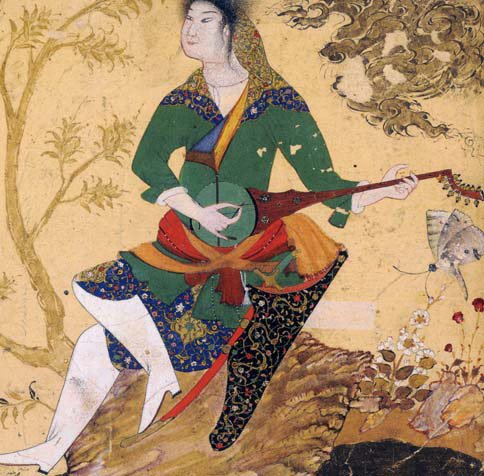
Safavid Period:
Music went through plenty of ups and downs afterward because other invasions by other nations. Safavids took power in Iran in 16th century and reunited the whole nation and did many good things in the realm of politics. But the early kings’ strictly religious biases and policies demanded the removal of any support of philosophies, which were correlated with music, poetry and literature. This led to decline in music until Shah Abbas I started ruling. Meanwhile, many Iranian musicians migrated to other countries especially to India. Unfortunately, it was too late and the support of Shah Abbas I could not help music to flourish again or bring it back to it's previous standing.
The playing of the Naqqareh was revived and continued during this era. Naqqareh is a pair of kettledrums one producing bass sound and the other treble. The tradition of playing Naqqareh goes back to Mithraism period in Iran when various musical instruments together with Naqqareh were played everyday at five different times including sunrise and sunset. During Safavids and after them, it was played at various other occasions as well.
Afsharid Period:
Nader Shah was so busy fighting in the battlefields that had no time to support music. He banned the mourning ceremonies of Moharram in the army and punished the disobedient severely. He liked to listen to various songs and the poems of Shahnameh while riding his horse.
Zand Period:
Karim Khan supported music and believed that the peace and happiness of himself and people were more important than broadening the borders of Iran. His reign did not last long.
Qajar Period:
During the first period of Qajar dynasty, kings sought comfortable life and pleasure. It was during the same era when the foundation of music was laid in the way in which it has survived up to now. Famous masters of music appeared and composed many pieces. The old joyful style of music was also revived to some extent.
In 1847, Amir Kabir, Naser-ed-Din Shah’s prime minister, invited a French general to Iran to teach military music. Therefore, Iranian students became familiar with the theoretical and practical principles of western music. The gramophone was introduced to Iran as a result of the general’s stay.
Constitutional Revolution:
Simultaneous with the constitutional revolution in Iran, the young musicians sought new forms of music to synchronize with the tide of social changes. Their products became very popular and well-liked by people in different corners of Iran.
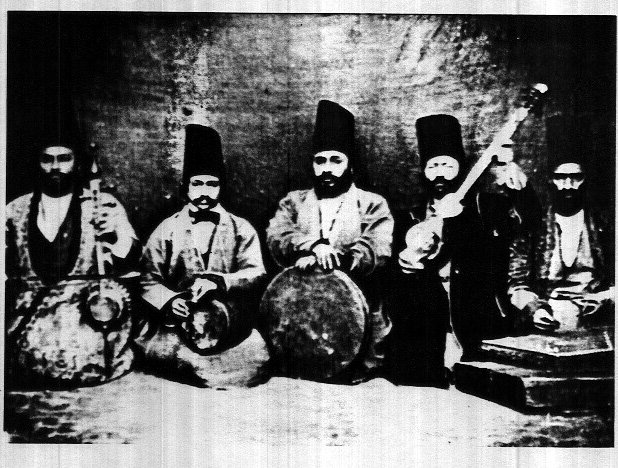
Pahlavi Period:
During Pahlavi period many young people were sent to Europe for education. The graduates returned to Iran and subsequently Iranian music was taught in Iran according to a new insight based on European basics and principles. Alinaqi Vaziry started the first modern Iranian orchestra using Iranian and western musical instruments. Music organizations, magazines, newspapers and books began to appear and music became institutionalized.
In 1937, Tehran’s Symphonic orchestra started practicinging and performing western as well as Iranian music. In 1952, pop music started in Iran. The traditional music gained less and less attention the authorities.
Instead, cabarets were opened and no truly inherited Iranian music was played there. There were only two music bands called Sheyda and Aref that kept the traditional music alive. Of course, some musicians introduced valuable pop music to Iran.
- Cuisine
About Iranian food:
Rice:
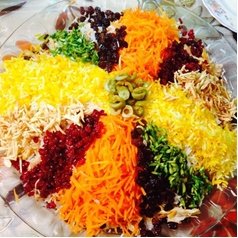
Mirza ghasemi:
Ingredients: Egg plant, Garlic, Egg

Various Kebabs:
Chicken kebab, Minced meat kebab, Lamb kebab
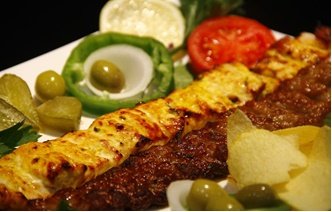

Dizi:
Ingredients: Lamb meat, Chickpea, Tomato, Garlic


Koofteh (Meat ball):
Ingredients: Minced meat, split peas, Fried onion
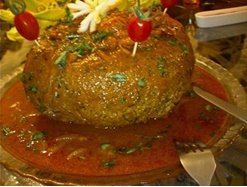
·
Zereshk polow & Morgh:
Ingredients: Chicken, Rice, Barberry
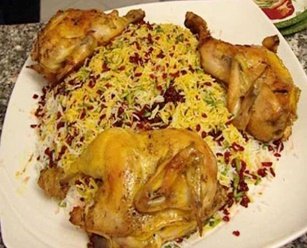
Mahi:
Poached or roasted fish (usually a trout)
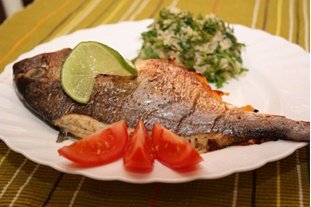
Ghormeh Sabzi:
Ingredients: Vegetable, Sour lemon, Meat, Beans

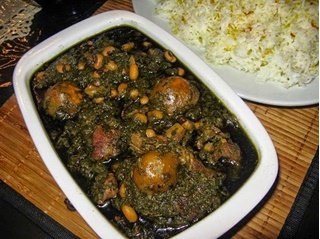
Gheimeh:
Ingredients: Fried potato, Meat, split peas
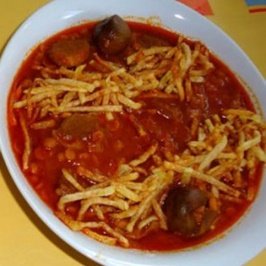
Fesenjun:
Ingredients: Grated quince,Walnut, Onion, Pomegranate sauce, Chicken or Beef
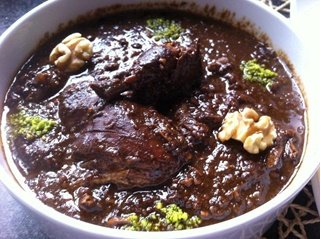
Various Salads:
- Olvieh Salad:
Ingredients: Mashed potato, Chopped chicken meat, Sauce
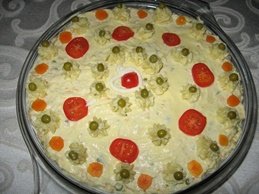
- Fasl (Green) Salad:
Ingredients: Lettuce,Cabbage, Cucumber, Tomato, Carrot

- Shirazi Salad:
Ingredients: Onion, Cucumber, Tomato

- Funerals
About Iranian Funerals:
When a Muslim is near death, those around him or her are called upon to give comfort, and reminders of God's mercy and forgiveness. They may recite verses from Qur'an, give physical comfort, and encourage the dying one to recite words of remembrance and prayer. It is recommended, if at all possible, for a Muslim's last words to be the declaration of faith: "I bear witness that there is no god but Allah." Upon death, those with the deceased are encouraged to remain calm, pray for the departed, and begin preparations for burial. The eyes of the deceased should be closed, and the body covered temporarily with a clean sheet. It is forbidden for those in mourning to excessively wail, scream, or thrash about. Grief is normal when one has lost a loved one, and it is natural and one is permitted to cry. One should strive to be patient, and remember that Allah is the One who gives life and takes it away, at a time appointed by him. It is not for us to question his wisdom. Muslims strive to bury the deceased as soon as possible after death, avoiding the need for embalming or otherwise disturbing the body of the deceased. An autopsy may be performed, if necessary, but should be done with the utmost respect for the dead.


The funeral will take place at the graveside and involves prayer and reading Quran. Before burial a prayer will be recited. The body will not be cremated as this is not permitted in Islam. Three days of mourning follow when visitors are received. Women avoid decorative jewelry and clothing. Everyone dresses in black as a sign of respect to the mourner's family.

About Iranian Currency:

About the Iranian currency we should warn you that it may seem confusing at first during your trip in Iran.
The national currency is the “Rial” so all bills are in Rials.
If you ask for the price of something you will hear the price in “Toman”. This is the currency which is used in all bussines. The crucial point about these two currencies is their difference: the Rial has a zero more than the Toman !!!.
1000 Tomans = 10000 Rials
About Iranian Languages & Accents:
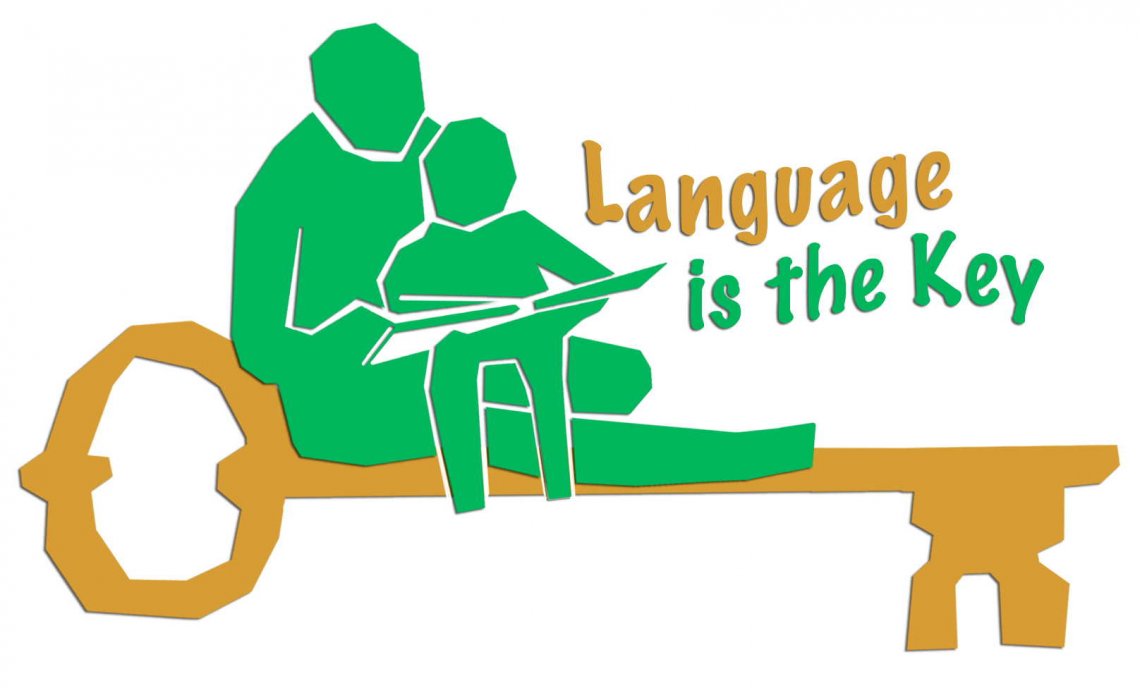
Iranian national language is Farsi (Persian), so all children are taught in Persian at schools. But in the various regions of the country people speak in many different languages or variations of the Persian language. Generally in the northwestern part of the country, the Turkish (Azeri) language is spoken which differs from the language of Turkey. In the western part, people mostly speak in the Kurdish language and in the southern part the common language is Arabic. On the other hand, different accents of the Persian language are spoken in north and southeastern Iran.





